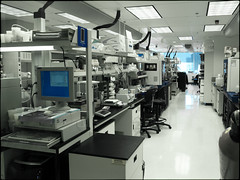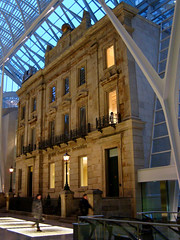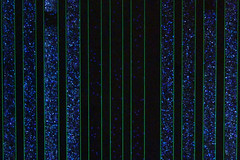I've taken some shots at a couple of recent events - first, the Canadian Motorsports Expo, back on an unseasonably warm day in late January, and then at the annual Canadian International AutoShow in February.
The Motorsports Expo was rather modest in size, and was held at the somewhat grandly named International Centre, out near Toronto airport. The stars of the show were found at a booth celebrating the 50th anniversary of Mosport International Raceway, another of my favourite photographic haunts. First off, a stunning, but never terribly successful, Panoz LMP-1 Roadster S. Unusually for this kind of car, it had a front-mounted engine.
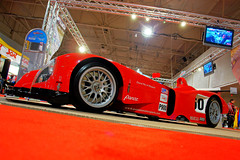
The other real stunner at this show was a Frissbee KR4 Can-Am car. From the last gasp of Can-Am in 1986, long after its glory days were over, this is basically a Lola T400 Formula 1 chassis with full bodywork and a Chevy engine in the back. Up-and-coming driver Paul Tracy would win the last ever SCCA Can-Am race in this car, at Mosport.

At the AutoShow, the usual bombardment of generic-looking new models was in evidence, along with a disappointing lack of exotics. But there were a few, including the astonishing presence of a Ferrari 599XX, the biggest, baddest, craziest front-engined sports racer the Scuderia has ever built. Unfortunately, it was hidden in a back corner behind a concrete post, but here it is anyway.
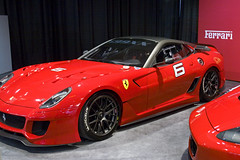
There was plenty more to look at, but the highlight had to be a tribute to motorsports legend Carroll Shelby, including some cars that are real legends, such as this rather pretty Shelby Cobra Daytona coupe, one of only six ever built.

And, of course, among the selection of stunning Cobras, Mustangs and the like, a few Ford GT40 race cars, including this absolute beauty, memorably crashed by one Mario Andretti at the 1967 24 Hours of Le Mans. Its sister car won the race, prompting driver Dan Gurney to spray the assembled multitude with champagne, thus starting a new racing tradition.
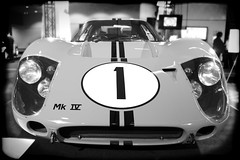
So there you go... more cars, more photos, more hours on Photoshop. And more Motorsports and AutoShow photos over at Flickr, as usual.
